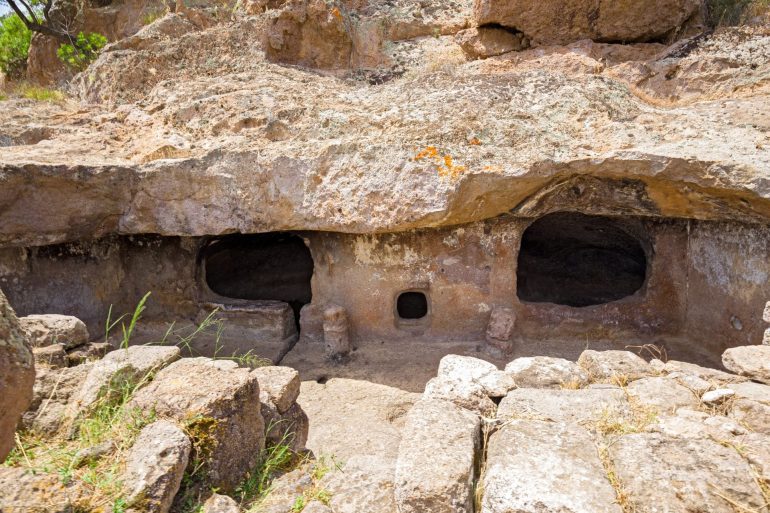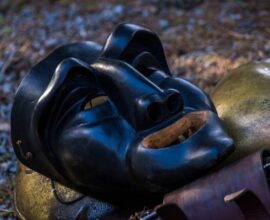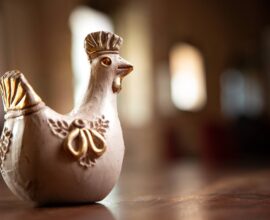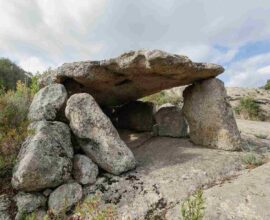Necropolis of Montessu: a picturesque site dating back to the pre-Nuragic period
Necropolis of Montessu: the largest and most impressive in Southern Sardinia
In Sardinia there are unmissable places full of history and mystery, such as Nora and the archaeological park of Pula, the Nuragic village of Su Nuraxi in the territory of Barumini, and the necropolis of Montessu, a pre-Nuragic archaeological site located in the municipality of Villaperuccio in the province of Southern Sardinia.
The Necropolis of Montessu, one of the largest and most important in Sardinia, excavated in an amphitheatre of natural trachytic rock, dates back to the third millennium BC and opens onto the southern side of the hill of Sa Pranedda. Built in the Late Neolithic (3200 – 2800 BC), the necropolis was also used in the New Eneolithic and up to the Early Bronze Age (2400 – 1600 BC): this means that the burial site was used for about a millennium, during which it was used alternately by the people of the cultures of Ozieri, Abealzu-Filigosa, Monte Claro, the bell-shaped vase and Bonnanaro.
Montessu is made up of about 40 domus de janas of various sizes and layouts, arranged symmetrically along the rocky wall, according to a design that does not appear random. In addition, some tombs are characterized by motifs engraved in relief which include spirals, concentric symbols and taurine protomes.
The simpler domus de janas have a single chamber measuring one metre in diameter with a curvilinear vault, while most of the tombs have a multicellular design with a larger chamber surrounded by several raised niches and an antechamber in the form of a curvilinear or rectangular vestibule. Access to the tombs was through a closed recessed stone door or hollowed out cavities.
Other tombs, on the other hand, are quadrangular in shape with deep vestibules, partly carved into the rock and partly bordered by orthostatic structures, an antechamber and two chambers characterized by a longitudinal axial composition. Inside cavities, niches and cupels, probably also connected to the cult rituals of the Neolithic mother goddess, were the grave goods.
Next to the necropolis there are also gigantic aniconic menhirs, the most striking of which is Luxia Arrabiosa, the monolith in the locality of Su Terrazzu, which is approximately 5 m tall and whose upper section was broken off by a lightning strike.
In 1972, under the guidance of Enrico Atzeni, professor at the University of Cagliari, excavations and archaeological investigations of the area began and continue to this day. The finds recovered during the numerous excavation campaigns are kept in the Archaeological Museums of Santadi and of Cagliari.
Necropolis of Montessu: an archaeological jewel in the heart of Sulcis
The archaeological area of Montessu is one of the most significant and fascinating sites dating back to the pre-Nuragic period as well as the largest domus de janas necropolis in the whole of southern Sardinia.
The most imposing of the different domus de janas is the so-called tomb of the spirals. Its interior is decorated with wolf teeth in red ochre (the colour of blood and regeneration), a taurine protome in the entrance wall of the cell, numerous spirals that symbolize the eyes and breasts of the Mother Goddess, curvilinear candlestick designs and the false door in the background that indicates the passage to the afterlife.
Another particularly interesting tomb is the one called “of the horns” where numerous horns of various shapes, symbol of the Bull God, can be found on the vault and on the entrance step.
Also worthy of attention are Sa Cresiedda (“the little church”) and Sa Grutta de Is Porcus (“the pig cave”), two imposing sanctuary tombs with elaborate architecture located at the ends of the amphitheatre built into natural rock. The front of the two domus de janas is characterized by megalithic alignments arranged in a semicircle to which are added entrances approximately two metres tall and a large pavilion that served as a vestibule and which has three openings allowing access to the mortuary. This is divided by sturdy partitions with doors in a fretwork design, organized in an enchanting spiral pattern that symbolizes the eyes.
Here are the days and times for visiting the necropolis of Montessu:
- October / March from 10:00 to 16:00 (closed on Mondays);
- April / May and September from 10:00 to 18:00;
- June, July and August from 10:00 to 20:00.
The site is easily accessible from Cagliari along the SS 130 towards Carbonia-Iglesias. Take the exit for Siliqua, at km 29.800, continue on the SS 293 for about 30 km, then turn right towards the town of Villaperuccio at km 60. At that point, simply cross the town and follow the tourist signs for the archaeological area of Montessu.
Would you like to visit the necropolis of Montessu and experience a dream holiday in a true paradise? The resort of Forte Village in Sardinia is waiting for you.






